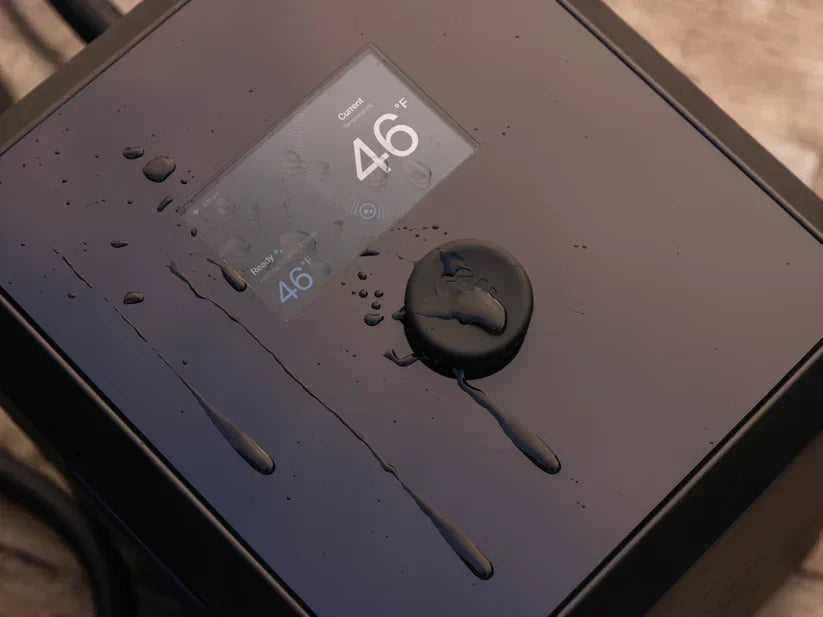By the Plunge Warehouse Team
What Temperature Should a Cold Plunge Be?
One of the most common questions we get: “How cold should my plunge be?” The answer depends on your goals, experience level, and tolerance — but here’s a breakdown to guide you.
🌡️ Cold Plunge Temperature Ranges
- Beginner: 55°F – 60°F (13°C – 15.5°C)
- Intermediate: 45°F – 54°F (7°C – 12°C)
- Advanced: 37°F – 44°F (2.5°C – 6.5°C)
Most of the mental and physical benefits can be achieved in the 50–59°F range, especially when practiced consistently.
🏆 Ideal Temps Based on Goals
1. 💪 Muscle Recovery
Target: 45°F – 55°F Cold water reduces inflammation, flushes out metabolic waste, and speeds up recovery after workouts.
2. 🧠 Mental Resilience & Mood Boost
Target: 48°F – 58°F Exposure at this range activates dopamine and norepinephrine, helping you build mental toughness and improve mood.
3. 🔥 Brown Fat Activation & Metabolism
Target: 40°F – 50°F Lower temperatures stimulate brown fat, which helps regulate body heat and improve insulin sensitivity over time.
🧊 Is Colder Always Better?
No. Colder temps increase stress on the body and aren’t necessary for most benefits. In fact, plunging at 50°F for 3–5 minutes consistently will do more good than pushing yourself into 35°F and burning out.
📉 Signs Your Water Is Too Cold
- Struggling to breathe or control your breath
- Dizziness, numbness, or disorientation
- Shivering uncontrollably after short exposure
If this happens, raise the temperature and shorten your time — safety first, always.
📏 Measuring Your Water Temp
Use a waterproof digital thermometer for the most accurate readings. If you’re using a chiller, most systems come with a built-in digital display for easy monitoring.
✅ Recap
- Start at 55–60°F and work down gradually
- Don’t go below 40°F unless you're experienced
- Plunge for 2–5 minutes, 3–5x per week
Remember: the goal isn’t to suffer — it’s to adapt. Start where you are, and stay consistent.
👉 Next Up: Mastering Breathwork for Cold Plunging →

